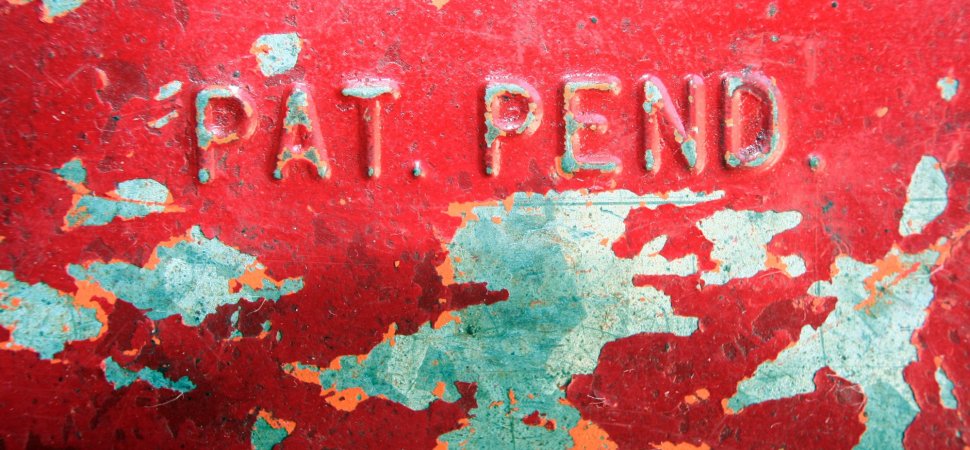Things To Do When Your Provisional Patent Application Has Nearly Lapsed

Because I strongly believe in the importance of testing the market, I’m a big proponent of provisional patent applications. Obtaining a non-provisional patent can easily cost upwards of $15,000. And the reality is, the vast majority of patents are worthless. Vast! Something like 97% of all patents never recoup what they cost to file. In fact, according to this 2013 study, the most innovative products over the past four decades have not been patented. To me, the risk of filing a patent on an idea that you are never actually going to profit from is simply too great — especially when you have the option of filing a PPA first.
PPAs, unlike patents, are extremely affordable: For most people, filing one will cost you just $65. After you file a PPA, you are legally entitled to describe your invention as “patent pending” for the next 12 months. Does your idea have merit? Is it worth investing in further? You can use those 12 months to test the market and find out.
This is a good time to point out that ideas differ — and therefore so does intellectual property strategy. If you have a game-changing innovation, you are going to need much more than a single patent to effectively establish and maintain perceived ownership over it. In some industries, like medical, auto, and hardware, patents are highly valued. This advice is geared towards simple improvements made to existing consumer products. In other words, the kinds of ideas that are most likely to be licensed and brought to market quickly.
My recommendation is this: Be prepared to hit the ground running the second you file your PPA. One year may sound like a lot of time, but really, it’s not. You need to make every minute of those 12 months count. So prepare your marketing materials in advance. Be ready to begin contacting potential licensees for product licensing consideration the day after you file your PPA. Establishing a rapport will take time. So will negotiations. Stay focused! Follow up with every company you submit your idea to until you get a yes or a no. Be unafraid to ask the employee you’ve been corresponding with pointblank over email: Are you interested?
But, life doesn’t always work out that way. People get busy. Maybe you weren’t fully prepared to hit the ground running after you filed your PPA. Maybe you haven’t made as much progress as you had hoped. Maybe you haven’t quite cut your deal. And now your provisional patent application is about to expire.
What are your options?
I get asked this question a lot. Like everything having to do with intellectual property, there are no hard and fast rules.
Let’s examine a few different scenarios.
Say you’ve made a lot of progress and are in the process of hammering out a contract. You could ask your licensee to file a non-provisional patent application on your behalf in lieu of paying you an upfront fee. If that doesn’t work, you could offer to have the cost of filing a non-provisional patent deducted from your future royalties. That makes good business sense! You’re protecting both of your interests.
If you have a big idea — an idea you know you’re going to need more than one year to bring to market — have the companies you submit it to sign a non-disclosure agreement. A forewarning: Most companies will not want to sign a non-disclosure agreement. Especially not if you ask them to right away. Be more strategic. Show them your sell sheet first. (Important note: The focus of your sell sheet should be on the big benefit of your concept, not how it works.) Are they intrigued? Ask them to sign a non-disclosure agreement if they get in touch with you to ask for more information. They will want you to sign their non-disclosure agreement, which is fine. Make sure to read it carefully though. Does it truly protect both of you? In other words, is it a mutual NDA? Confidentiality agreements typically stipulate that they’re binding for a specific length of time. Make sure yours is good for at least three to four years.
Publicly disclosing your invention can prevent you from obtaining a patent later on. Confidentiality agreements preclude triggering a public disclosure bar to patenting. If you’ve only been discussing your concept under an NDA, in other words, you haven’t publicly disclosed your invention. So if you’ve run out of time, you can file the same provisional patent application again. Of course, you’ll lose the earlier priority filing date you established the first time around.
Have you improved upon your concept over the past 12 months? If so, you can file a new PPA based on those improvements — even if you’ve publicly disclosed or displayed your invention. In fact, you should file another PPA, says patent expert Damon Kali. “Any change at all can be filed and probably should be filed,” Kali further opined. “Often times an inventor will get some new insight while pitching the product. The inventor should file on that insight no matter how insubstantial. It may be that the insight is ultimately not useful, but it may also be that the insight becomes the defining feature of the invention down the line. It’s a small price for a good bit of insurance.”
If you have been contacting potential licensees for product licensing consideration exclusively (and not, for example, marketed your product at a trade show or put it up on a website) you can file the same PPA again. According to Kali, “The on-sale bar prevents patenting if the invention has been for sale or there is an offer for sale for more than a year. An offer to license is generally not an offer to sell.” (Depending on how the invention is presented, there are instances where it is and where it isn’t an offer, Kali explained.) Personally, I like gray areas. I think you can use them to your advantage. That’s my business perspective.
Also of note: Offers to sell under NDA also do not trigger the on-sale bar in accordance with USPTO policy, Kali said. “This is the Patent and Trademark Office’s interpretation of the law and may not hold up in court,” he clarified, adding that the issue has yet to be thoroughly litigated. “For now, an offer to sell under NDA is excepted.”
For those who are wondering why file a PPA at all then, Kali laid out this scenario. “Let’s say an inventor offers to sell their invention under NDA, and then the receiving party inadvertently publishes the invention before filing. Their publication trumps the NDA. The inventor would find remedy in breach of contract, but not patent law (unless and until they have an issued patent). And if they haven’t already filed, they lose all foreign rights upon publication.”
The take-home lesson, Kali said, is to file a PPA before disclosing.
You can, of course, decide to go ahead and file a non-provisional patent application if your PPA is about to expire. What’s your gut telling you? Trust it.
In summary, what’s really important is that you take full advantage of your 12 months of patent-pending status. Is your concept marketable? Use what you discover to help you plot your next steps. Don’t get caught without the insight you need to make a sound decision moving forward. Don’t let yourself be motivated by fear.
Disclaimer provided by Damon Kali: The information contained herein is educational in nature and does not constitute or contain legal advice. Such advice should account for the specific facts of your situation. The information is provided to the public and does not create or constitute an attorney/client relationship.
Article courtesy of Inc.com, first published on September 16, 2016 under the title “What to Do When Your Provisional Patent Application is About to Expire”. Link to original publication: https://www.inc.com/stephen-key/what-to-do-when-your-provisional-patent-application-is-about-to-expire.html.



